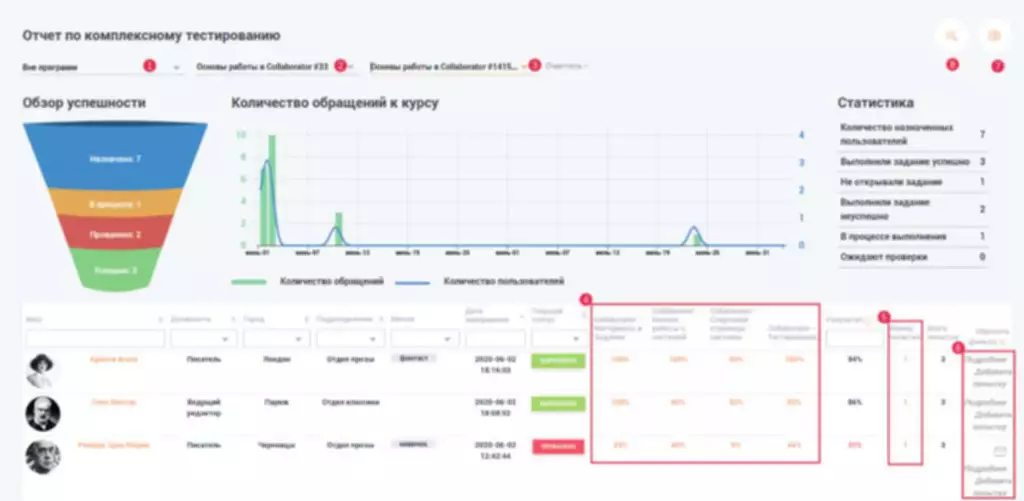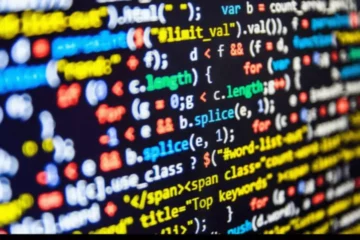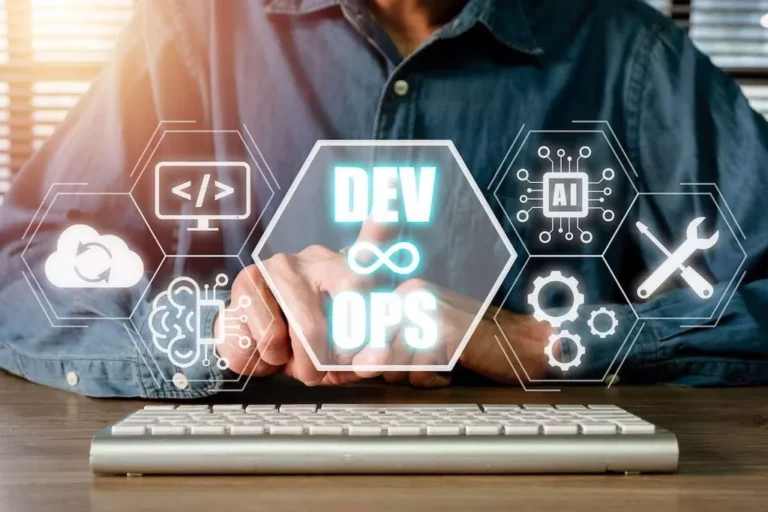What Is Machine Learning: Definition and Examples

Madry pointed out another example in which a machine learning algorithm examining X-rays seemed to outperform physicians. But it turned out the algorithm was correlating results with the machines that took the image, not necessarily the image itself. Tuberculosis is more common in developing countries, which tend to have older machines. The machine learning program learned that if the X-ray was taken on an older machine, the patient was more likely to have tuberculosis. It completed the task, but not in the way the programmers intended or would find useful. Machine learning is a subfield of artificial intelligence, which is broadly defined as the capability of a machine to imitate intelligent human behavior.
- Unsupervised machine learning can find patterns or trends that people aren’t explicitly looking for.
- As a result, more and more companies are looking to use AI in their workflows.
- Training essentially "teaches" the algorithm how to learn by using tons of data.
- Developing ML models whose outcomes are understandable and explainable by human beings has become a priority due to rapid advances in and adoption of sophisticated ML techniques, such as generative AI.
- In some industries, data scientists must use simple ML models because it's important for the business to explain how every decision was made.
- Unsupervised machine learning is often used by researchers and data scientists to identify patterns within large, unlabeled data sets quickly and efficiently.
Python is simple and readable, making it easy for coding newcomers or developers familiar with other languages to pick up. Python also boasts a wide range of data science and ML libraries and frameworks, including TensorFlow, PyTorch, Keras, scikit-learn, pandas and NumPy. Similarly, standardized workflows and automation of repetitive tasks reduce the time and effort involved in moving models from development to production. After deploying, continuous monitoring and logging ensure that models are always updated with the latest data and performing optimally. ML requires costly software, hardware and data management infrastructure, and ML projects are typically driven by data scientists and engineers who command high salaries. Clean and label the data, including replacing incorrect or missing data, reducing noise and removing ambiguity.
Beginner-friendly machine learning courses
Usually, the model makes the improvements based on built-in logic, but humans can also update the algorithm or make other changes to improve output quality. It's based on the idea that computers can learn from historical experiences, make vital decisions, and predict future happenings without human intervention. Machine learning is a fast-growing trend in the health care industry, thanks to the advent of wearable devices and sensors that can use data to assess a patient's health in real time. The technology can also help medical experts analyze data to identify trends or red flags that may lead to improved diagnoses and treatment. Machine learning programs can be trained to examine medical images or other information and look for certain markers of illness, like a tool that can predict cancer risk based on a mammogram.
Capitalizing on machine learning with collaborative, structured enterprise tooling teams - MIT Technology Review
Capitalizing on machine learning with collaborative, structured enterprise tooling teams.
Posted: Mon, 04 Dec 2023 08:00:00 GMT [source]
While we are not in the era of strong AI just yet—the point in time when AI exhibits consciousness, intelligence, emotions, and self-awareness—we are getting close to when AI could mimic human behaviors soon. When the problem is well-defined, we can collect the relevant data required for the model. The data could come from various sources such as databases, APIs, or web scraping. When I’m not working with python or writing an article, I’m definitely binge watching a sitcom or sleeping😂. I hope you now understand the concept of Machine Learning and its applications.
Transformer networks, comprising encoder and decoder layers, allow gen AI models to learn relationships and dependencies between words in a more flexible way compared with traditional machine and deep learning models. That’s because transformer networks are trained on huge swaths of the internet (for example, all traffic footage ever recorded and uploaded) instead of a specific subset of data (certain images of a stop sign, for instance). Foundation models trained on transformer network architecture—like OpenAI’s ChatGPT or Google’s BERT—are able to transfer what they’ve learned from a specific task to a more generalized set of tasks, including generating content. At this point, you could ask a model to create a video of a car going through a stop sign. Many algorithms and techniques aren't limited to a single type of ML; they can be adapted to multiple types depending on the problem and data set. For instance, deep learning algorithms such as convolutional and recurrent neural networks are used in supervised, unsupervised and reinforcement learning tasks, based on the specific problem and data availability.
Data compression
Leaders who take action now can help ensure their organizations are on the machine learning train as it leaves the station. To help you get a better idea of how these types differ from one another, here’s an overview of the four different types of machine learning primarily in use today. In this article, you’ll learn more about what machine learning is, including how it works, different types of it, and how it's actually used in the real world. We’ll take a look at the benefits and dangers that machine learning poses, and in the end, you’ll find some cost-effective, flexible courses that can help you learn even more about machine learning. While a lot of public perception of artificial intelligence centers around job losses, this concern should probably be reframed.
A sequence of successful outcomes will be reinforced to develop the best recommendation or policy for a given problem. Algorithms trained on data sets that exclude certain populations or contain errors can lead to inaccurate models. Basing core enterprise processes on biased models can cause businesses regulatory and reputational harm.
This approach involves providing a computer with training data, which it analyzes to develop a rule for filtering out unnecessary information. The idea is that this data is to a computer what prior experience is to a human being. The retail industry relies on machine learning for its ability to optimize sales and gather data on individualized shopping preferences. Machine learning offers retailers and online stores the ability to make purchase suggestions based on a user’s clicks, likes and past purchases. Once customers feel like retailers understand their needs, they are less likely to stray away from that company and will purchase more items.
A Bayesian network, belief network, or directed acyclic graphical model is a probabilistic graphical model that represents a set of random variables and their conditional independence with a directed acyclic graph (DAG). For example, a Bayesian network could represent the probabilistic relationships between diseases and symptoms. Given symptoms, the network can be used to compute the probabilities of the presence of various diseases. Bayesian networks that model sequences of variables, like speech signals or protein sequences, are called dynamic Bayesian networks. Generalizations of Bayesian networks that can represent and solve decision problems under uncertainty are called influence diagrams. Similarity learning is an area of supervised machine learning closely related to regression and classification, but the goal is to learn from examples using a similarity function that measures how similar or related two objects are.

Consider starting your own machine-learning project to gain deeper insight into the field. Consider taking Stanford and DeepLearning.AI's Machine Learning Specialization. You can build job-ready skills with IBM's Applied AI Professional Certificate. Artificial intelligence (AI) and machine learning (ML) are often used interchangeably, but they are actually distinct concepts that fall under the same umbrella.
It is used in cell phones, vehicles, social media, video games, banking, and even surveillance. AI is capable of problem-solving, reasoning, adapting, and generalized learning. AI uses speech recognition to facilitate human functions and resolve human curiosity. You can even ask many smartphones nowadays to translate spoken text and it will read it back to you in the new language. Clearly, machine learning is important to businesses because of its wide range of applications and its ability to adapt and provide solutions to complex problems efficiently, effectively, and quickly. Knowing how to use ML to meet individual business needs, challenges and goals are vital, and once companies can understand this increasingly complex technology, the benefits are undoubtedly great.
Neural networks are good at recognizing patterns and play an important role in applications including natural language translation, image recognition, speech recognition, and image creation. Classical, or "non-deep," machine learning is more dependent on human intervention to learn. Human experts determine the set of features to understand the differences between data inputs, usually requiring more structured data to learn.
For example, an early neuron layer might recognize something as being in a specific shape; building on this knowledge, a later layer might be able to identify the shape as a stop sign. Similar to machine learning, deep learning uses iteration to self-correct and to improve its prediction capabilities. Once it “learns” what a stop sign looks like, it can recognize a stop sign in a new image. Supervised learning, also known as supervised machine learning, is defined by its use of labeled datasets to train algorithms to classify data or predict outcomes accurately. As input data is fed into the model, the model adjusts its weights until it has been fitted appropriately. This occurs as part of the cross validation process to ensure that the model avoids overfitting or underfitting.
These algorithms are also used to segment text topics, recommend items and identify data outliers. Two of the most widely adopted machine learning methods are supervised learning and unsupervised learning – but there are also other methods of machine learning. Scientists focus less on knowledge and more on data, building computers that can glean insights from larger data sets. Supervised learning
models can make predictions after seeing lots of data with the correct answers
and then discovering the connections between the elements in the data that
produce the correct answers. This is like a student learning new material by
studying old exams that contain both questions and answers. Once the student has
trained on enough old exams, the student is well prepared to take a new exam.
Semisupervised learning combines elements of supervised learning and unsupervised learning, striking a balance between the former's superior performance and the latter's efficiency. Typically, machine learning models require a high quantity of reliable data to perform accurate predictions. When training a machine learning model, machine learning engineers need to target and collect a large and representative sample of data. Data from the training set can be as varied as a corpus of text, a collection of images, sensor data, and data collected from individual users of a service.
Ensuring these transactions are more secure, American Express has embraced machine learning to detect fraud and other digital threats. Today, the method is used to construct models capable of identifying cancer growths in medical scans, detecting fraudulent transactions, and even helping people learn languages. But, as with any new society-transforming technology, there are also potential dangers to know about.
These machines look holistically at individual purchases to determine what types of items are selling and what items will be selling in the future. For example, maybe a new food has been deemed a “super food.” A grocery store’s systems might identify increased purchases of that product and could send customers coupons or targeted advertisements for all variations of that item. Additionally, a system could look at individual purchases to send you future coupons. In basic terms, ML is the process of
training a piece of software, called a
model, to make useful
predictions or generate content from
data. Various types of models have been used and researched for machine learning systems, picking the best model for a task is called model selection. Inductive logic programming (ILP) is an approach to rule learning using logic programming as a uniform representation for input examples, background knowledge, and hypotheses.
In the coming years, most automobile companies are expected to use these algorithm to build safer and better cars. Social media platform such as Instagram, Facebook, and Twitter integrate Machine Learning algorithms to help deliver personalized experiences to you. Product recommendation is one of the coolest applications of Machine Learning. Websites are able to recommend products to you based on your searches and previous purchases.
OpenAI employed a large number of human workers all over the world to help hone the technology, cleaning and labeling data sets and reviewing and labeling toxic content, then flagging it for removal. However, there are many caveats to these beliefs functions when compared to Bayesian approaches in order to incorporate ignorance and uncertainty quantification. An ANN is a model based on a collection of connected units or nodes called "artificial neurons", which loosely model the neurons in a biological brain. Each connection, like the synapses in a biological brain, can transmit information, a "signal", from one artificial neuron to another. An artificial neuron that receives a signal can process it and then signal additional artificial neurons connected to it.
Traditional programming similarly requires creating detailed instructions for the computer to follow. Machine learning is behind chatbots and predictive text, language translation apps, the shows Netflix suggests to you, and how your social media feeds are presented. It powers autonomous vehicles and machines that can diagnose medical conditions based on images.
The interconnecting fan blades have been designed with a balanced P/Q curve suitable for both air and liquid cooling. Built-in features such as controllable ARGB lighting and automatic PWM adjustment are compatible with all major motherboards and allow for in-depth customization. In this article, you will learn the differences between AI and ML with some practical examples to help clear up any confusion.
- Breakthroughs in AI and ML occur frequently, rendering accepted practices obsolete almost as soon as they're established.
- Much like how a child learns, the algorithm slowly begins to acquire an understanding of its environment and begins to optimize actions to achieve particular outcomes.
- In this case, the algorithm discovers data through a process of trial and error.
- To learn more about AI, let’s see some examples of artificial intelligence in action.
- A core objective of a learner is to generalize from its experience.[5][42] Generalization in this context is the ability of a learning machine to perform accurately on new, unseen examples/tasks after having experienced a learning data set.
The brief timeline below tracks the development of machine learning from its beginnings in the 1950s to its maturation during the twenty-first century. Instead of typing in queries, customers can now upload an image to show the computer exactly what they’re looking for. You can foun additiona information about ai customer service and artificial intelligence and NLP. Machine learning will analyze the image (using layering) and will produce search results based on its findings. AI and machine learning can automate maintaining health records, following up with patients and authorizing insurance — tasks that make up 30 percent of healthcare costs. Typically, programmers introduce a small number of labeled data with a large percentage of unlabeled information, and the computer will have to use the groups of structured data to cluster the rest of the information.
Prediction or Inference:
For instance, email filters use machine learning to automate incoming email flows for primary, promotion and spam inboxes. To produce unique and creative outputs, generative models are initially trained
using an unsupervised approach, where the model learns to mimic the data it's
trained on. The model is sometimes trained further using supervised or
reinforcement learning on specific data related to tasks the model might be
asked to perform, for example, summarize an article or edit a photo. Neural networks in machine learning—or a series of algorithms that endeavors to recognize underlying relationships in a set of data— facilitate this process. Making educated guesses using collected data can contribute to a more sustainable planet. Machine learning has made disease detection and prediction much more accurate and swift.
The goal of AI is to create computer models that exhibit “intelligent behaviors” like humans, according to Boris Katz, a principal research scientist and head of the InfoLab Group at CSAIL. This means machines that can recognize a visual scene, understand a text written in natural language, or perform an action in the physical world. “Deep learning” becomes a term coined by Geoffrey Hinton, a long-time computer scientist and researcher in the field of AI. He applies the term to the algorithms that enable computers to recognize specific objects when analyzing text and images. Machine learning has also been an asset in predicting customer trends and behaviors.

Descending from a line of robots designed for lunar missions, the Stanford cart emerges in an autonomous format in 1979. The machine relies on 3D vision and pauses after each meter of movement to process its surroundings. Without any human help, this robot successfully navigates a chair-filled room to cover 20 meters in five hours.
In fact, customer satisfaction is expected to grow by 25% by 2023 in organizations that use AI and 91.5% of leading businesses invest in AI on an ongoing basis. AI is even being used in oceans and forests to collect data and reduce extinction. It is evident that artificial intelligence is not only here to stay, but it is only getting better and better. In recent years, there have been tremendous advancements in medical technology. For example, the development of 3D models that can accurately detect the position of lesions in the human brain can help with diagnosis and treatment planning. Machine Learning is behind product suggestions on e-commerce sites, your movie suggestions on Netflix, and so many more things.
Today, machine learning is one of the most common forms of artificial intelligence and often powers many of the digital goods and services we use every day. Bias and discrimination aren’t limited to the human resources function either; they can be found in https://chat.openai.com/ a number of applications from facial recognition software to social media algorithms. Because Machine Learning learns from past experiences, and the more information we provide it, the more efficient it becomes, we must supervise the processes it performs.

For example, an algorithm may be fed a smaller quantity of labeled speech data and then trained on a much larger set of unlabeled speech data in order to create a machine learning model capable of speech recognition. At its core, the method simply uses algorithms – essentially lists of rules – adjusted and refined using past data sets to make predictions and categorizations when confronted with new data. The computational analysis of machine learning algorithms and their performance is a branch of theoretical computer science known as computational learning theory via the Probably Approximately Correct Learning (PAC) model. Because training sets are finite and the future is uncertain, learning theory usually does not yield guarantees of the performance of algorithms. Although algorithms typically perform better when they train on labeled data sets, labeling can be time-consuming and expensive.
Unsupervised machine learning is often used by researchers and data scientists to identify patterns within large, unlabeled data sets quickly and efficiently. In common usage, the terms “machine learning” and “artificial intelligence” are often used interchangeably with one another due to the prevalence of machine learning for AI purposes in the world today. While AI refers to Chat GPT the general attempt to create machines capable of human-like cognitive abilities, machine learning specifically refers to the use of algorithms and data sets to do so. While ML is a powerful tool for solving problems, improving business operations and automating tasks, it's also complex and resource-intensive, requiring deep expertise and significant data and infrastructure.
For example, in that model, a zip file's compressed size includes both the zip file and the unzipping software, since you can not unzip it without both, but there may be an even smaller combined form. IBM watsonx is a portfolio of business-ready tools, applications and solutions, designed to reduce the costs and hurdles of AI adoption while optimizing outcomes and responsible use of AI. This algorithm is used to predict numerical values, based on a linear relationship between different values.
Interpretable ML techniques are typically used by data scientists and other ML practitioners, where explainability is more often intended to help non-experts understand machine learning models. A so-called black box model might still be explainable even if it is not interpretable, for example. Researchers could test different inputs and observe the subsequent changes in outputs, using methods such as Shapley additive explanations (SHAP) to see which factors most influence the output.
What Is Machine Learning? Definition, Types, and Examples
Decision tree learning uses a decision tree as a predictive model to go from observations about an item (represented in the branches) to conclusions about the item's target value (represented in the leaves). It is one of the predictive modeling approaches used in statistics, data mining, and machine learning. Decision trees where the target variable can take continuous values (typically real numbers) are called regression trees. In decision analysis, a decision tree can be used to visually and explicitly represent decisions and decision making. In data mining, a decision tree describes data, but the resulting classification tree can be an input for decision-making. Semi-supervised learning falls between unsupervised learning (without any labeled training data) and supervised learning (with completely labeled training data).
Using historical data as input, these algorithms can make predictions, classify information, cluster data points, reduce dimensionality and even generate new content. Examples of the latter, known as generative AI, include OpenAI's ChatGPT, Anthropic's Claude and GitHub Copilot. Reinforcement learning is a type of machine learning where an agent learns to interact with an environment by performing actions and receiving rewards or penalties based on its actions. The goal of reinforcement ml meaning in technology learning is to learn a policy, which is a mapping from states to actions, that maximizes the expected cumulative reward over time. Models may be fine-tuned by adjusting hyperparameters (parameters that are not directly learned during training, like learning rate or number of hidden layers in a neural network) to improve performance. ” It’s a question that opens the door to a new era of technology—one where computers can learn and improve on their own, much like humans.
Machine learning (ML) is a branch of artificial intelligence (AI) that focuses on building applications that learn from data and improve their accuracy over time without being programmed to do so. The next step is to select the appropriate machine learning algorithm that is suitable for our problem. This step requires knowledge of the strengths and weaknesses of different algorithms.
For example, an unsupervised model might cluster a weather dataset based on
temperature, revealing segmentations that define the seasons. You might then
attempt to name those clusters based on your understanding of the dataset. Two of the most common use cases for supervised learning are regression and
classification. AI and machine learning are quickly changing how we live and work in the world today. As a result, whether you’re looking to pursue a career in artificial intelligence or are simply interested in learning more about the field, you may benefit from taking a flexible, cost-effective machine learning course on Coursera. As a result, although the general principles underlying machine learning are relatively straightforward, the models that are produced at the end of the process can be very elaborate and complex.
These chatbots can use Machine Learning to create better and more accurate replies to the customer’s demands. ML platforms are integrated environments that provide tools and infrastructure to support the ML model lifecycle. Key functionalities include data management; model development, training, validation and deployment; and postdeployment monitoring and management. Many platforms also include features for improving collaboration, compliance and security, as well as automated machine learning (AutoML) components that automate tasks such as model selection and parameterization. In some industries, data scientists must use simple ML models because it's important for the business to explain how every decision was made.

Regression analysis is used to discover and predict relationships between outcome variables and one or more independent variables. Commonly known as linear regression, this method provides training data to help systems with predicting and forecasting. Classification is used to train systems on identifying an object and placing it in a sub-category.
Reinforcement learning algorithms are used in autonomous vehicles or in learning to play a game against a human opponent. The way in which deep learning and machine learning differ is in how each algorithm learns. "Deep" machine learning can use labeled datasets, also known as supervised learning, to inform its algorithm, but it doesn’t necessarily require a labeled dataset.
















